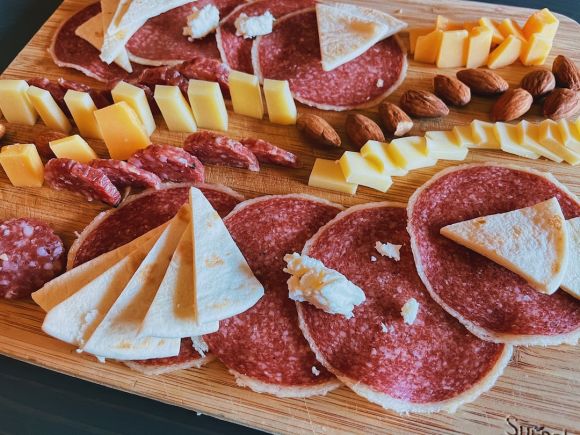Charcuterie boards have gained immense popularity in recent years, becoming a staple at parties, gatherings, and even as a solo indulgence. With their beautiful arrangement of cured meats, artisan cheeses, and an array of complementary accompaniments, charcuterie boards have become an art form in themselves. If you’re looking to master the art of crafting the perfect charcuterie board, here are some essential tips to help you create a stunning and delicious spread.
Choose a Variety of Cured Meats
The foundation of any charcuterie board lies in the selection of cured meats. Opt for a variety of flavors and textures to create an interesting and diverse assortment. Prosciutto, salami, and chorizo are popular choices that offer distinct tastes. Consider including both thinly sliced options for easy consumption and thicker cuts for added visual appeal.
Artisanal Cheeses: The Stars of the Show
No charcuterie board is complete without an assortment of artisanal cheeses. Aim for a mix of flavors, textures, and milk types. Soft cheeses like brie or camembert, semi-soft cheeses like gouda or fontina, and hard cheeses like cheddar or manchego all bring their unique characteristics to the table. Don’t be afraid to experiment with lesser-known cheeses to surprise and delight your guests.
Accompaniments that Complement
To elevate your charcuterie board to the next level, include a selection of accompaniments that complement the flavors of the cured meats and cheeses. Fresh fruits like grapes, sliced apples, or juicy figs add a burst of sweetness. Nuts such as almonds or pecans provide a delightful crunch. Olives, pickles, and spreads like honey or mustard add a tangy or sweet element to the board. Keep in mind that the accompaniments should enhance the overall experience rather than overpowering the flavors of the meats and cheeses.
Presentation is Key
The visual appeal of a charcuterie board is just as important as its taste. Select a large wooden or marble board as your canvas. Arrange the cured meats in loose rolls or folds, creating height and dimension. Cut the cheeses into bite-sized cubes or wedges and scatter them throughout the board. Place the accompaniments strategically, ensuring a balance of colors and textures. Don’t be afraid to leave some empty spaces on the board to create a sense of elegance and simplicity.
Pairings: Wine, Beer, or Cocktails
To complete the charcuterie experience, consider pairing your board with the perfect beverage. Wine is a classic choice, with reds like Pinot Noir or Cabernet Sauvignon complementing the richness of the cured meats and cheeses. For a lighter option, a crisp white wine like Sauvignon Blanc or a sparkling rosé works well. If beer is more your style, opt for a hoppy IPA or a refreshing wheat beer. And if you prefer cocktails, a classic Negroni or a gin and tonic can add a touch of sophistication to your charcuterie board experience.
Experiment and Enjoy
The beauty of crafting a charcuterie board lies in its versatility. There are no strict rules to follow, allowing you to experiment and create a unique spread that suits your taste and preferences. Don’t be afraid to try new combinations of meats, cheeses, and accompaniments. Allow your creativity to guide you and enjoy the process of creating a masterpiece that will leave your guests impressed and satisfied.
In conclusion,
Mastering the art of crafting the perfect charcuterie board requires a balance of flavors, textures, and visual appeal. By carefully selecting a variety of cured meats, artisanal cheeses, and complementary accompaniments, and paying attention to presentation and pairings, you can create a charcuterie board that is not only delicious but also a feast for the eyes. So gather your ingredients, let your creativity flow, and enjoy the experience of crafting a charcuterie board that will be the centerpiece of any occasion.
